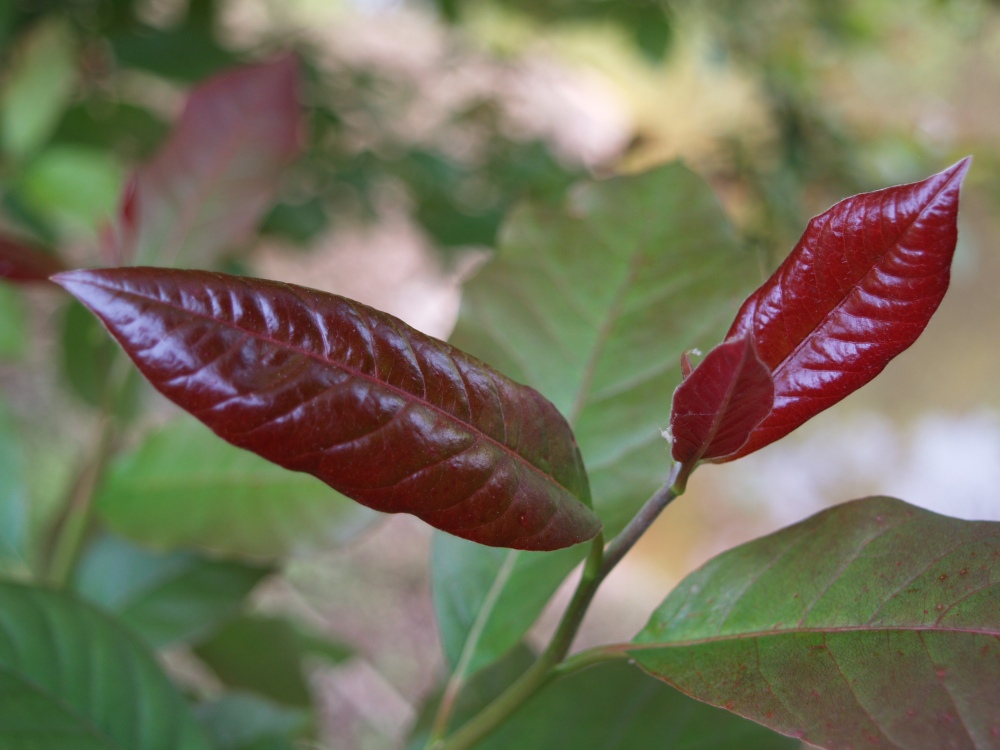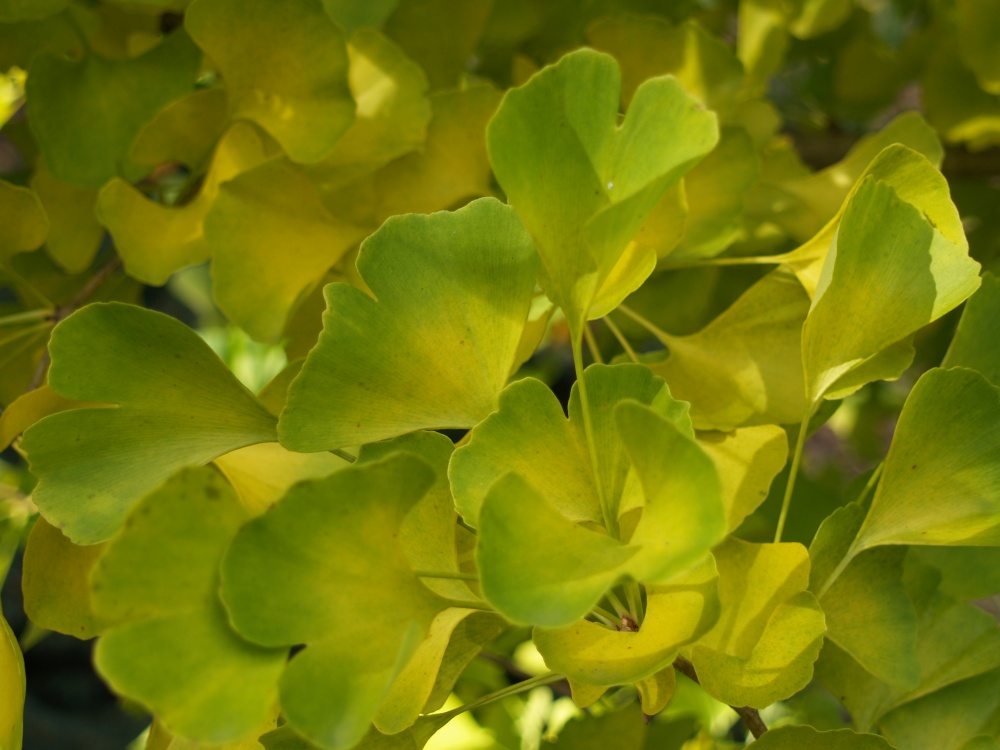A sunny garden will often benefit from some manner of shade, particularly from the oppressive summer sun June through August. In my garden there are mature maples and poplars along the southeastern property line, but these do little to provide relief from the blazing afternoon sun. Two river birches, a black gum, dogwoods, cherries, magnolias, katsura, a Seven Son tree, several Japanese maples, and large cryptomeria and hollies planted over twenty years offer some small areas of shade, but much of the area is open and exposed.
In the center of the rear garden by the large swimming pond is a twelve foot square, metal roofed summer house, not a gazebo, not an enclosed structure or anything so grand that it should be designated a “house”, but a roof supported by four pillars that offers shade from the summer sun and shelter while the occasional thunderstorm passes through. Beneath its cover are a metal mesh glider painted white and a rustic, stained bench, a novelty constructed from salvaged timber with a wagon wheel as the backrest. The two are quite incongruous, and be assured that my wife would not allow me to decorate any part of our home’s interior, but the seating is comfortable and shady.
Any sort of structure might do to provide shelter from the sun. A pergola or arbor covered by a deciduous grape vine, climbing rose, or wisteria (or even one of the tropicals that grow so quickly beginning in late May) will allow sun to shine through in cooler periods, but is surprisingly effective in cooling a patio or deck. A word of caution is required here to warn that wisteria and some other vines can be quite aggressive and within a few short years the trunk of wisteria will crush lumber four inches in diameter.
A structure with a solid roof, such as a gazebo or garden pavilion, and even temporary structures and large umbrellas can provide a welcome respite, though light weight coverings must be secured so as not to blow away in a stiff breeze.
With numerous towering trees along the property border, planting additional oaks or maples for shade would overwhelm this garden, but for other large properties a tree that grows to fifty or a hundred feet might be appropriate. I have compared the mature size of many flowering trees to the space occupied by a two car garage, and of course a maple will require a considerably larger area, so caution must be exercised to determine if there is adequate space for such a tree. Too often mistakes in planting too many large trees too close to the house are paid for ten years later with expensive tree surgery to remove limbs that block drives or threaten to tumble onto the house, and with shade that is too deep and pervasive.
If not an oak or maple, then what trees are suitable?
River birches (Betula nigra, with peeling tan bark) grow quite tall, but are more narrow in width to allow planting on smaller properties and in close proximity to patios and decks, where a tall tree is preferred but one without low spreading branches. Many cultivars of birch will not prosper in the heat of the mid-Atlantic, but river birch is a native that thrives along creeks and rivers, and is ideal for planting in damp spots, but will need supplemental irrigation in a dry location. A similar narrow form is found in the fastigiate European hornbeam (Carpinus betulus ‘Fastigiata’) that grows more oval as it matures.
Black gum (Nyssa sylvatica, the variety ‘Wildfire’ with red new growth, above) is a beautiful, slow growing tree, though it will grow nearly as large as most oaks and maples in time, and katsura (Cercidiphyllum) and yellowood (Cladrastis lutea) are mid-sized trees, relatively slow to forty to fifty feet in height, but with outstanding foliage, and yellowood has delightful blooms in late spring. Gingko (Gingko biloba, fall color, below) is excruciatingly slow to grow, but the unique leaves and brilliant yellow fall color demand inclusion for those with extreme patience.
Beeches (Fagus, both European and the native American) are slow to become established but will grow to become fine, long lived trees, and many have deeply colored foliage (Fagus sylvatica tricolor, below). There are cultivars growing from thirty to over a hundred feet in height, so a bit of research is required to select the appropriate variety.
If shade is desired for a patio, and not to worry about shading the entire property, then there are many small trees (most are flowering trees) that provide excellent shade. Small trees with upright branching such as many crapemyrtles and the Rutgers hybrid dogwoods must be place precisely since their spread is not so wide, but they can be planted close to a patio or a window where shade is desired. There are many other small trees that will suit specific requirements and provide limited shade, from upright growing Japanese maples to magnolias, dogwoods, and cherries.
There are many other shade and flowering trees that will provide some relief, but I encourage some research prior to planting rather than selecting the fastest or tallest, when that tree might prove damaging in years to come.